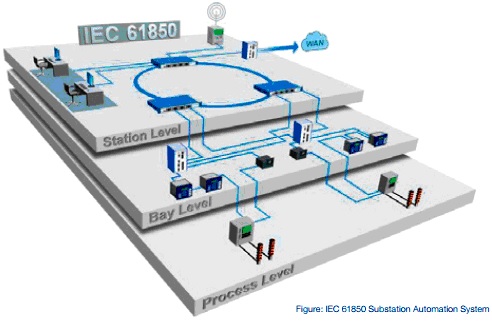IEC 61850-3 for Embedded Computers
Overview
IEC 61850-3 is an Ethernet-based industrial protocol for substations capable of processing large amounts of data. An industrial power substation acquires electricity from power plants and converts it to a lower voltage. These substations are there to protect, operate, and deliver data. This allows businesses to make more accurate decisions and improve overall quality. For the defense industry and information technology system integrators make sure that substations work together as one. But because of the fact that substation producers utilized controllers from different manufacturers, the price will ultimately increase for maintenance and protocol integration. This article shows why the IEC 61850-3 certification is necessary for bringing together all systems to faster and more convenient communications using the same protocol in a substation.
IEC 61850-3 in Substations
There is more to spend on using substations that use different communication procedures. Substations using the same communication protocol ensure lower costs for maintenance and installation and faster communications. Because there are multiple substations in a smart power grid, it is crucial to connect all of them with the IEC 61850-3 standard.
There are three levels in substation technology:
Station level
This level gives a general view of the whole station while analyzing and processing data.
Bay level
This level collects data, performs actions on the main equipment, manages protection, maintenance work, control of intelligent electrical devices, and transformers.
Process level
This level provides communication that receives the data and critical messages from the bay and station levels. Process levels are responsible for the performance of the whole system.

Implementing IEC 61850-3 for Embedded Systems
Embedded computers are generally used for industrial applications. The problem arises when an insufficient amount of protection is equipped with the systems. The IEC 61850-3 standard ensures fundamental protections for systems when exposed to the industrial environment. This certification is necessary for all systems that are vulnerable to electromagnetic interferences, wide ranges of temperatures, and shocks/vibrations. All of these categories are threats that can cause overheating, system malfunctions due to random vibrations and hardware damage.
Anti-shock and vibrations
IEC 61850-3 standards must meet a 50G antishock and 5-500 Mhz vibrations for proper procedures. This level of protection ensures the safety of the equipment from packaging, loading, and shipping devices. Improper handling can also cause interior components to be damaged. Vibration problems will affect the system from shaky environments like trains, earthquakes, cables, ships, and aircraft.
Protection against Electromagnetic Interference
Embedded systems are almost always exposed to, if not physical interferences, but electromagnetic interferences as well. Even a highly technologically advanced embedded system can be useless without proper EMI protection. EMI or RFI (radio frequency interference) are active in daily industrial productions. These disturbances can be caused by electromagnetic radiation from other systems, noise, natural causes, or power lines (cell phones interfering with airplane connections for guidance and weather). It is important for an embedded system to have electromagnetic compatibility (EMC) to prevent hardware malfunctions.
IEC 61850-3 Ensures Operations in Wide Temperature Range
Embedded systems capable of operating in wide ranges of temperatures are extremely valuable. Environmental weather can be a primary source of system malfunctions. The ranges of the temperatures that the industrial environment brings can fluctuate anywhere from -40 to 75 degrees Celsius depending on its surroundings. Industrial embedded systems utilize fanless systems for better heat dissipation and cooling methods by utilizing heatsinks. This method results in no more internal moving parts to guarantee a more reliable system as a whole.




